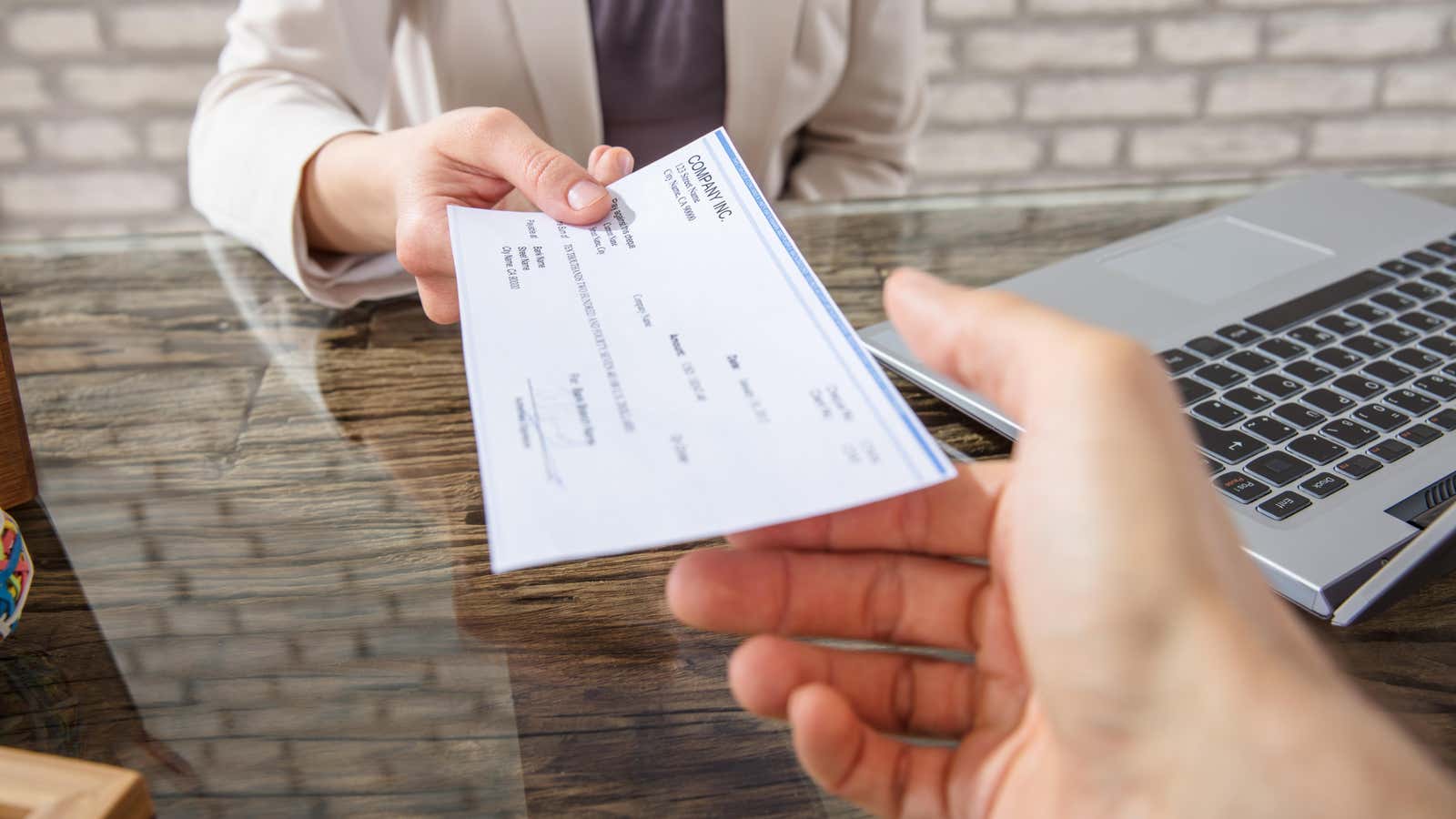Why You Can’t Always Trust a Cleared Check

For scammers, fake checks are a Toyota Corolla car – safe, reliable and always there. And over the years, fake check scams have only become more sophisticated and one of the most successful scams for scammers, so you still need to be aware of them so you don’t become a victim.
How do check scammers work?
At its core, fake check scams work like this: the scammer gives you a fake check that you deposit into your account and convinces you to give him money. This usually works because the checks are seemingly “cleared” by the bank and you can see the money coming into your account quickly. This is due to a law that, ironically, was meant to help customers.
“By law, banks and credit unions must pay back at least part of the deposit whether the check is good or not,” said Melissa Morgan, general manager of retail sales at Patelco Credit Union. “That’s why you should only deposit checks from someone you trust.”
The law is called Regulation CC and it was passed in 1987. It says banks should let you use at least part of your deposit right away — even before they can tell if it’s real or fake — to help speed up the process. the slow process of paying checks when people put their paychecks off work in the 1980s. While technology has made depositing checks more efficient, it has also made counterfeit checks more sophisticated.
“Advanced graphics and printing technologies allow fraudsters to easily create fraudulent and hard-to-detect counterfeit checks in minutes, adding a sense of legitimacy to their frauds,” the Federal Deposit Insurance Corporation (FDIC) said in a press release. “False checks can look so real that it is very difficult for consumers or even bank employees to detect them.”
Once you think the funds are in your account, the scammers ask you to send them money in a variety of ways, including cash, personal checks, gift cards, bank transfers, or insecure person-to-person transactions such as Zelle, Venmo, or PayPal Friends. and “Family” – in all ways, when your check is actually returned, and there is nothing anyone can do to return your money.
Various types of fake check scams
Here are some of the most popular check scams you will find:
- Claim that you won the lottery: This trick claims that you won the lottery or a lot of money and you are given a fake check that you actually see in your account (temporarily). The catch is that in order to receive the money, you must first pay “taxes and fees” before receiving the full amount.
- Buying stuff from you: Scammers will buy something you sell online, such as a service or deposit for a car or apartment. They will then send you a fake check with more than what you asked for. As soon as you see the money in your account, they will ask you to return an additional amount (or the entire amount) and pretend that it was a mistake on their part. Most people do this, and once it’s done, the check is returned and you lose the amount you sent them to make up for their “mistake”.
- Offering you a “job”: You are offered a job and paid an amount to start working or for “supplies” or other employment needs. Your “boss” then asks you to use the funds from the fake check to pay for things like “account activation”, fees, or other “job responsibilities”. Some scammers “hire” people to “evaluate” the money transfer business: victims are asked to withdraw funds from your account and send them to your employer and evaluate the transfer process. Of course, all you are really doing is handing out your money.
How to find them
To avoid scams, here are the guidelines from the Federal Trade Commission and the FDIC:
- If someone sends you a check and tells you to return the money – whether it’s a money transfer or a gift card purchase – you can bet it’s a scam.
- Even if you see money in your account, the bank can still take it back if the check is not returned later. If you don’t know the person who wrote the check, don’t send money.
- If you are selling something online, never accept a check for more than the asking price.
- Make sure the check was issued by a legitimate bank. While some fake checks will contain the name of a legitimate bank, a fake name is a sure fake. The FDIC’s BankFind Suite allows you to find FDIC-insured banking institutions in the US.
- Check with the bank that supposedly issued the check to make sure it’s genuine. Make sure you find the phone number on the bank’s official website – don’t use the phone number on the check because it could be a direct link to a scammer. Next, call the official number and ask to check the receipt. Most likely, they will need to know the check number, date of issue, and amount.
What to do if you have been scammed
If you believe you have been the victim of a counterfeit check scam, report it immediately to one of the following agencies:
- United States Postal Inspection Service (if you received a check in the mail).
- Your state or local attorney general for consumer protection .
- If the scam was committed online, file acomplaint with the Online Crime Complaint Center .
- If you need more information on what to do, visit FDIC.gov , call the FDIC toll-free at 1-877-275-3342, or contact the FTC .